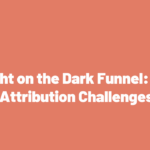We live in an omni-channel world, and that has drastically changed the way consumers buy. It’s no longer a linear journey; it’s an intricate web of touch-points across online and offline channels.
So it’s no surprise that this interconnectedness means that actions in one channel can ripple across others, sometimes in ways that are not immediately apparent.
For example:
- You make a creative TV ad spot. People talk about it on social media. Then they search for your brand. They click on your paid brand search links. And only then do they convert.
- You place a billboard on a busy street. People walk around and see it over and over again. A few weeks later, they’re in the market for your product. They remember your name, so they go to a retail store like Walmart and purchase it.
These are all actual ways people buy. And they’re driven by halo effects.
How to measure halo effects?
Halo effects refer to the phenomenon where the performance of one channel is influenced by the activities of another.
It’s an easy concept to understand – but it’s a hard one to measure. And the consequences of not measuring them well can be costly. Let’s consider the above examples:
- For the TV ad spot → paid brand search scenario, if you measure it with last-touch attribution or even multi-touch attribution, the intuitive realization is that paid brand search is really working and we should increase our budget there. The truth, however, is that this is probably not incremental, and what is actually driving an impact is the halo effects from TV ads – that’s where incrementality is more likely to be found.
- For the billboard → retail example, we run into a similar scenario if we misread the halo effects. We’ll think that retail is working really well – and it is, but it’s because billboards are being incremental.
Unfortunately, the other side is also true – sometimes halo effects are non-existent but we convince ourselves that they’re making an effect – and that can be equally costly.
We’ve seen people use the idea of a halo effect to justify continued spending into a marketing channel without actual evidence that it truly does have a halo effect or that it’s actually driving performance.
“All of our measurement methods say this TV campaign isn’t performing, but we believe that there is a halo effect and so we’re going to keep spending into it” – that’s just trying to justify something without any sort of evidence, and a good marketing mix modeling shouldn’t promote this.
MMM and halo effects:
Traditionally, MMM aims to attribute sales, conversions, or other key performance indicators (KPIs) to specific marketing channels. However, halo effects blur these attribution lines, as they signify that the performance of one channel can be influenced, positively or negatively, by another.
In the era of omni-channel marketing, consumers often interact with multiple touch-points before making a decision, so attributing the sale to a single channel can ignore the cumulative impact of all touch-points – undervaluing the role of halo effects. The opposite, as we discussed, can also be true.
With the increasing convergence of marketing channels, distinguishing the unique contribution of each channel becomes even more challenging. How do we separate the impact of a paid search ad from an organic search result when both appear on the same search engine results page? That’s a hard question to answer with precision.
Adapting MMM to account for halo effects requires a reevaluation of traditional modeling approaches. This involves not only incorporating more complex data sets but also embracing more nuanced analytical techniques.
If you want to estimate all of those different interactions, a lot of modeling frameworks will give you a combinatorial explosion. You have a ton of different parameters that you’re now estimating, and that causes a lot of problems in the model itself. Modelers have to be very careful about doing that.
Just trying to estimate all of those interaction effects doesn’t work practically. And so what that means is that modelers need to be thoughtful about which interaction effects they want to try to model and exactly how they are going to model them.
At Recast, we spend a lot of time looking at the interaction effects that have been well-studied in the literature between what we sometimes refer to as top-of-funnel channels and bottom-of-funnel channels.
For example, there’s a lot of evidence and good reason to believe a channel like TV and a channel like branded search will have halo effects because awareness-building channels, if incremental, drive search activity that is then captured by branded search spend.
TLDR:
- In the current omni-channel marketing landscape, sales or conversions are often the result of multiple interactions across various channels, meaning that attributing these outcomes to a single channel can overlook the significant cumulative impact of all marketing touch-points.
- Common misinterpretations of halo effects, such as attributing the success of brand searches solely to paid search ads while neglecting the influence of TV advertising, can lead to inefficient and costly decisions in allocating marketing budgets.
- Adapting Marketing Mix Modeling (MMM) to effectively account for halo effects requires a shift from traditional models to more sophisticated approaches that involve analyzing complex data sets and embracing a more nuanced, multilayered process when building the model.



